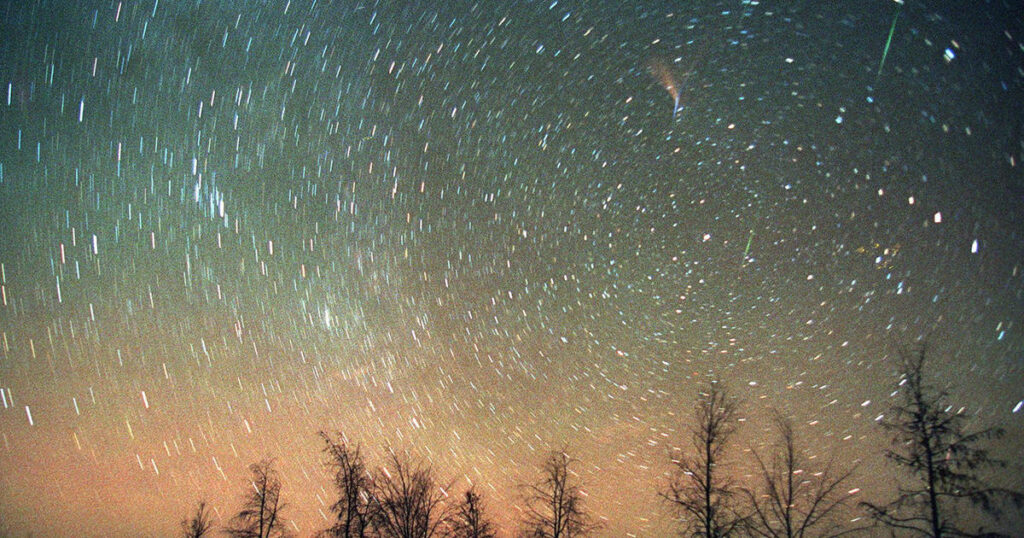One of the fastest meteor showers will zoom past Earth this week, peaking in the early morning hours of Saturday, Nov. 18. The Leonids ware also expected to be visible early Friday, Nov. 17, according to the Planetary Society, a nonprofit run by Bill Nye focused on space education.
The moon will be a crescent in the evenings, meaning the sky will be dark and the meteor shower might be more visible, the society says.
The Leonids are only expected to produce about 15 meteors an hour but they are bright and can sometimes be colorful. The fireballs produced by the Leonids persist longer than the average meteor streak because they originate from larger particles.
The Leonids come from debris from the comet 55P/Tempel-Tuttle. The shower reaches its perihelion – closest approach to the sun – every 33 years. It last reached perihelion, the best time for viewing, in 1998 and it will occur again in 2031.
JAMAL NASRALLAH/AFP via Getty Images
The Leonids are fast – streaking by at 44 miles per second, according to NASA. Still, stargazers may be able to view them this year.
The Leonids’ fireballs are known as Earth-grazers – they streak close to the horizon and are bright with long, colorful tails.
Where and when can you see the Leonid meteor shower?
NASA says stargazers should look for the Leonids around midnight their local time. Lying flat on your back in an area away from lights and looking east should give you a good view of the sky. Once your eyes adjust to the sky’s darkness – which takes less than 30 minutes – you will begin to see the meteors. The shower will last until dawn.
The meteor shower is annual and usually peaks in mid-November, but every 33 years or so, viewers on Earth may get an extra treat: the Leonids may peak with hundreds to thousands of meteors an hour. How many meteors you see depends on your location on Earth, NASA says.
A meteor shower with at least 1,000 meteors is called a meteor storm. The Leonids produced a meteor storm in 1966 and again in 2002. For 15 minutes during the 1966 storm, thousands of meteors per minute fell through Earth’s atmosphere – so many that it looked like it was raining.
Thanks for reading CBS NEWS.
Create your free account or log in
for more features.
